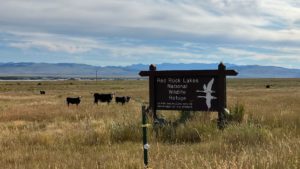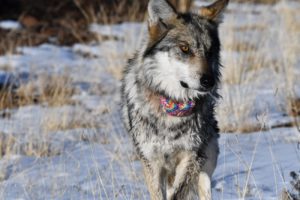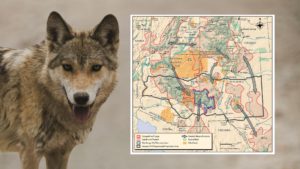Public lands ranching is not just a story of subsidized grazing and ecological degradation; it’s also a tale of government-sanctioned wildlife extermination. At the heart of this dark chapter lies Wildlife Services, a little-known agency within the U.S. Department of Agriculture, whose mission has often aligned well with the interests of public lands ranchers.
Wildlife Services, originally established in the early 20th century as the Bureau of Biological Survey, has a long history of lethal control measures aimed at protecting livestock from predators. Today, it continues to operate with a mandate that frequently prioritizes the elimination of wildlife over ecological balance and biodiversity.
Public lands ranchers have long relied on Wildlife Services to remove predators that they perceive as threats to their herds. This includes iconic species like coyotes, wolves, mountain lions, and bears. The methods employed by Wildlife Services are often brutal and indiscriminate, ranging from trapping and poisoning to aerial gunning and denning (the killing of young animals in their dens).
The scale of this killing is staggering. Each year, Wildlife Services exterminates tens of thousands of predators across the American West, often at the behest of ranchers. In 2023 alone, the agency reported killing over 375,000 native animals, including more than 300 gray wolves, 68,000 coyotes, 430 black bears, and 24,000 beavers. These numbers are not just statistics; they represent a significant disruption to the natural order and a loss of biodiversity that is difficult to quantify.
The rationale behind these lethal control measures is often based on the assumption that predators pose a significant threat to livestock. However, studies have shown that the actual impact of predators on livestock is relatively minor. For instance, data from the National Agricultural Statistics Service indicate that less than 1% of the U.S. cattle inventory is lost to predators annually. Yet, the response from Wildlife Services is disproportionate, driven more by the demands of ranchers than by scientific evidence.
The financial cost of this war on wildlife is borne by taxpayers. Wildlife Services operates with a budget that runs into the hundreds of millions of dollars, much of which is spent on lethal control activities. This represents a hidden subsidy to the livestock industry, one that is rarely scrutinized but has profound implications for the management of our public lands.
The ecological cost is even greater. Predators play a crucial role in maintaining the health of ecosystems. They help control populations of herbivores, which in turn allows vegetation to thrive and supports a diverse array of species. The removal of predators can lead to trophic cascades, where the effects ripple through the ecosystem, causing unintended and often detrimental consequences.
Moreover, the use of lethal control measures by Wildlife Services often fails to achieve its intended goals. Killing predators can create a vacuum that is quickly filled by other individuals, leading to a cycle of killing that does little to reduce livestock losses in the long term. Non-lethal methods, including livestock guardian animals, better fencing, flagging and improved herd management with the existence of range riders, have been shown to be more effective and sustainable solutions.
The relationship between public lands ranchers and Wildlife Services is emblematic of a broader issue: the prioritization of private interests over public good. Our public lands are a shared resource, meant to be managed for the benefit of all Americans and the wildlife that inhabit them. Allowing a small group of ranchers to dictate the fate of these lands and their inhabitants is a betrayal of this trust.
Learn More






